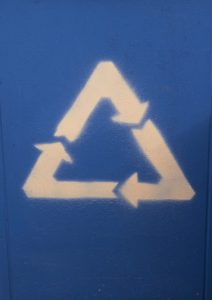
You may wonder what happens to your old car battery when it is replaced with a new one. In most cases, it will get recycled. Car batteries, which are lead-acid type batteries cannot be disposed of in incinerators or landfills because they are too toxic.
Lead-acid Batteries Come in Two Designs
Two types of lead-acid batteries are recycled. These batteries include deep-cycle batteries and starting batteries. A starting battery, like the name implies, provides the power to start an engine. A deep-cycle battery delivers a continual low level of power to keep an engine running.
A Short Introduction to the History
Lead-acid batteries were introduced in 1859 by Gaston Plante, a French scientist, and were the first rechargeable type batteries used commercially. Initially, the batteries were used to store power by utilities and to illuminate the lights on trains.
How the Batteries are Used
When most people think of a lead battery, they often think of an auto battery. However, lead batteries are used in a number of formats. Batteries are also used to power buses, golf carts, and boats. In addition, they are employed to power back-up generators in such places as prisons or hospitals during bad storms. Utility companies use lead-acid batteries to prevent power outages and handle variances in energy demand.
How the Batteries are Made
Batteries that are described as lead-acid contain large amounts of lead as well as sulfuric acid. When the batteries are made, a set of lead plates are used, each of which represent a negative and positive charge. The plates are dipped into a combination water solution and acid to charge the battery. Once the battery is constructed, it is placed into a container made of plastic.
Lead-acid batteries hold their charges for several years before they decline. When you consider the contents of the batteries, you quickly understand why recycling is important. The batteries can seriously endanger animals and humans, including ground water supplies. The lead used for the batteries must be mined too, which harms the environment over time.
The Recycling Process
Lead-acid batteries are crushed during recycling into pieces that measure about the size of a nickel. The various components are separated out of the pieces. Crushing is done inside a hammer mill before the broken parts are inserted into a vat. When inside the vat, the heavy materials and lead drop to the bottom and the plastic floats.
During this part of the process, the polypropylene plastic pieces are scooped up while the liquids are removed, leaving the heavy metals and lead. Thereafter, each of the materials go through a different recycling process.
Recycling the Plastic
The plastic is washed, dried, and sent to a plastic recycler where the pieces are melted into an almost liquid-like state. The molten plastic is placed inside an extruder that creates small plastic pellets of the material. Pellets are placed into manufacturing battery cases before the process starts once again.
How the Lead is Repurposed
Lead oxide, lead grids, and other lead components are cleaned and heated inside smelters. The molten lead is then poured into ingot molds where impurities float to the top. The impurities are removed before the ingots are cooled. After the ingots have sufficiently cooled, they are extracted from the molds and sent to battery companies where they are, again, melted and used in the manufacture of new batteries.
Recycling the Sulfuric Acid
Old battery acid or sulfuric acid is either neutralized so it turns into water or processed and converted to sodium sulfate, which is an odorless powder. The neutralized acid, when converted to water, is treated and cleaned in a waste water treatment facility to ensure it meets with clean water standards. If the acid is converted to sodium sulfate, it is used in the manufacture of laundry detergent, textiles, or glass.
According to the EPA, about 80% of the lead and plastic in a lead-acid battery is recycled for reuse. Lead-acid batteries are also closed-loop recycled, which means each part of a battery is recycled into a new battery.
Removing a Lead-acid Battery from Your Vehicle
Because lead-acid batteries are considered dangerous, retailers who sell the batteries often feature recycling programs. When removing a lead-acid battery from your own car then, leave the cable ends affixed. Also, check the battery to make sure it is not leaking. If it is leaking fluid, immediately transfer the component to a leak-proof container. Battery boxes made of plastic or fiberglass are sold at auto parts retailers.
Battery acid eats through concrete surfaces. So, if you put the battery on the ground, try to place it on an asphalt surface. Clean up a leak with baking soda, and treat the clean-up material as hazardous waste.
Lead-acid batteries should be transported in a leak-proof container to a recycling facility. If you have more than one battery to recycle, separate each part with a piece of wood so the post terminals do not meet.
References:
http://recyclenation.com/2014/07/recycle-lead-acid-batteries
https://www.batterysolutions.com/recycling-information/how-are-batteries-recycled/
http://batterycouncil.org/?page=battery_recycling
Image Credit:
James Provost
